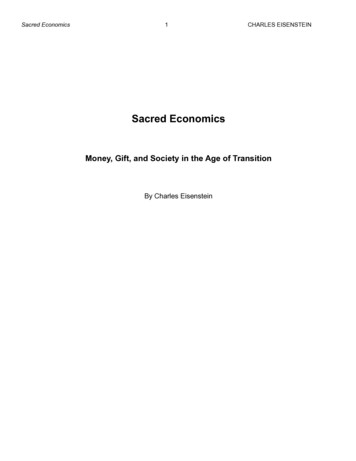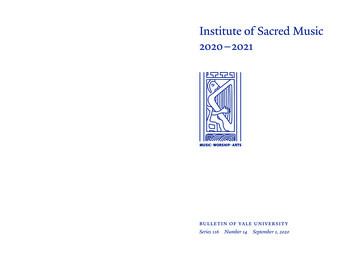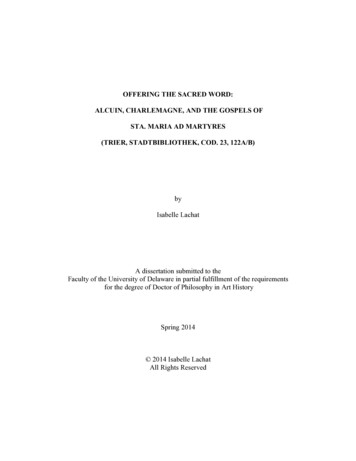
Transcription
OFFERING THE SACRED WORD:ALCUIN, CHARLEMAGNE, AND THE GOSPELS OFSTA. MARIA AD MARTYRES(TRIER, STADTBIBLIOTHEK, COD. 23, 122A/B)byIsabelle LachatA dissertation submitted to theFaculty of the University of Delaware in partial fulfillment of the requirementsfor the degree of Doctor of Philosophy in Art HistorySpring 2014 2014 Isabelle LachatAll Rights Reserved
UMI Number: 3631187All rights reservedINFORMATION TO ALL USERSThe quality of this reproduction is dependent upon the quality of the copy submitted.In the unlikely event that the author did not send a complete manuscriptand there are missing pages, these will be noted. Also, if material had to be removed,a note will indicate the deletion.UMI 3631187Published by ProQuest LLC (2014). Copyright in the Dissertation held by the Author.Microform Edition ProQuest LLC.All rights reserved. This work is protected againstunauthorized copying under Title 17, United States CodeProQuest LLC.789 East Eisenhower ParkwayP.O. Box 1346Ann Arbor, MI 48106 - 1346
OFFERING THE SACRED WORD:ALCUIN, CHARLEMANGE, AND THE GOSPELS OFSTA. MARIA AD MARTYRES(TRIER, STADTBIBLIOTHEK, COD. 23, 122A/B)byIsabelle LachatApproved:Lawrence P. Nees, Ph.D.Chairperson of the Department of Art HistoryApproved:George H. Watson, Ph.D.Dean of the College of Arts and SciencesApproved:James G. Richards, Ph.D.Vice Provost for Graduate and Professional Education
I certify that I have read this dissertation and that in my opinion it meets theacademic and professional standard required by the University as a dissertationfor the degree of Doctor of Philosophy.Signed:Lawrence Nees, Ph.D.Professor in charge of dissertationI certify that I have read this dissertation and that in my opinion it meets theacademic and professional standard required by the University as a dissertationfor the degree of Doctor of PhilosophySigned:Lauren Hackworth Petersen, Ph.D.Member of dissertation committeeI certify that I have read this dissertation and that in my opinion it meets theacademic and professional standard required by the University as a dissertationfor the degree of Doctor of PhilosophySigned:Lynley A. Herbert, Ph.D.Member of dissertation committee
ACKNOWLEDGMENTSLawrence Nees, for his continuous support, encouragement, guidance, generosity of timeand scholarship and incomparable patience.My friends and colleagues, whose support and humor have sustained me throughout thislong adventure, with special thanks to my fellow medievalists, Lynley Herbert, TerriNevins and Kathleen Schowalter, as well as honorary medievalists, Amy Reese andAdam Rudolphi.My friends and colleagues at the University of Delaware Honors program, for theirunwavering support, and for bringing into my life so many wonderful students, withspecial thanks to my fellow iconoclast, Ray Peters.Reiner Nolden, and the staff of the Trier Stadtbibliothek.This manuscript is dedicated to:My parents, Josette and Raymond Lachat, for their unconditional love and support.iv
TABLE OF CONTENTSLIST OF FIGURES.viiABSTRACT.xiChapter1THE GOSPELS OF STA. MARIA AD MARTYRES IN THE SCHOLARYDISCOURSE ON CAROLINGIAN ART AND THOUGHT .1The Fate of the Trier Codex and its Scholarly Reception .4Trier on Display .13Paleography and Authority: Tyranny of a Privileged Assessment .13The Carolingian Renaissance Paradigm and its Legacy .20Alcuin’s Impact and Legacy .29A Gift Almost Fit for a King: Understanding Luxury .34Ottonian Nachleben .382CONSTRUCTING THE IMPERIUM CHRISTINAUM: DEFININGCHRISTOMIMETIC KINGSHIP IN THE EARLY CAROLINGIAN PERIOD . 41A Changing Political Landscape: the Closing Years of the Eighth Century .45From Emulation to Exaltation: Christomimesis as Model of Kingship.49Challenges and Threats: Toward a Formulation of the Divine Rule of Kings .55Tassilo and the Lasting Lombard Impertinence.66Tassilo’s Patronage of the Arts: Visual Propaganda.76The Tassilo Chalice.78The Montpellier Psalter: The Psalter of Tassilo .84Advice, Praise and Admonition: Charlemagne’s Advisors and their Impact .87Alcuin: Royal Advisor, Mentor, and Friend of Charlemagne .94Between Officium and Ministerium: Defining Carolingian Kingship .109The Palace Chapel at Aachen: Charlemagne Reflecting Christ.112The Imperial Coronation .1213SACRED GENEALOGY, HUMBLES TREASURES, AND THECAROLINGIAN LEADER OF THE PEOPLE OF GOD: TRIER 23’STEXTUAL COMPONENTS .125v
Matthew’s Primacy .130Sacred Genealogy: the Commentary on Hebrew Names .132Debated Authorship: Alcuin’s Contribution and Legacy .143Significance of Matthew’s Genealogy .147The Dedication Poem: Friendship, Holy Days, and the Most HumbleTreasures .156Gospel Harmony .1673FLOWING FROM A SINGLE SOURCE: GOSPEL HARMONY AND THEANTICIPATION OF THE DIVINE . 172The Decorative Program: an Overview .172The Script .174The Gospel Opening Sequence .179The Decorated Initials .181The Canon Tables .188The Gospel Frontispieces .193The Evangelists Symbols .196The Figure of Christ .203The Matthew Anomaly .210The Color Scheme.217The Franco-Saxon Connection .218Visualizing Harmony and Glorifying the King of Kings: the Function of theFrontispieces .219Trier 23’s Challenge to Scholarly Constructs and Expectations .220Trier 23: a Luxury Manuscript? .221Another Case of False Modesty: The Dedication Poem .2254APPROPRIATION AND AGGRANDIZEMENT: CONTEXTUALIZINGTRIER 23’S NACHLEBEN . 227The Carolingian Past: Selective Recollection and Emulation .232Appropriation: Scope and Obstacles .238The Manuscripts.246The Maiestas Domini .253Context and Expectations .260CONCLUSION .265FIGURES .268BIBLIOGRAPHY .325AppendixMANUSCRIPT DESCRIPTION .359vi
LIST OF FIGURESFigures removed due to copyright restrictionsFig.1Matthew Gospel Opening, Gospels of Sta. Maria ad Martyres,(henceforth Trier 23), Trier, Stadtbibliothek, cod. 23, 122a/b,fol. 23v-24r .302Fig. 2Mark Gospel Opening, Trier 23, fol. 79v-80r .303Fig. 3Luke Frontispiece, Trier 23, Volume II, fol. 5v.304Fig. 4John Frontispiece, Trier 23, Volume II, fol. 62v.305Fig. 5Maiestas Domini, Trier 23, fol. 22v.306Fig. 6Otto III Enthroned, Aachen, Domkapitel, Aachen/Liuthard Gospels,fol. 15v-16r .307Fig. 7Ruler Portrait, Prayerbook of Charles the Bald, Munich,Residenz Schatzkammer, fol.38v-39r .308Fig. 8David, First Bible of Charles the Bald, Paris, BnF, Ms. Lat. 1,fol. 215v .309Fig. 9Christ in Majesty, First Bible of Charles the Bald, Paris, BnF,Ms. Lat. 1, fol. 329v.310Fig. 10Presentation, First Bible of Charles the Bald, Paris, BnF, Ms. Lat. 1,fol.423 .311Fig. 11David, Durham, Cathedral Library, MS B. II. 30.312Fig. 12David Enthroned, Durham, Cathedral Library, MS B. II. 30.313Fig. 13David, Psalter of Tassilo, Montpellier, Bibliothèque de la Faculté deMédecine, Ms.409, fol. 1r .314Fig. 14Christ, Pslater of Tassilo, Montpellier, Bibliothèque de la Faculté deMédecine, Ms.409, Christ, fol. 2v .315vii
Fig. 15Tassilo Chalice, Kremsmünster Abbey.316Fig. 16Lindau Gospels, back cover, New York, Morgan Library, Ms. Lat.1.317Fig. 17Lindau Gospels, back cover, detail. New York, Morgan Library,Ms. Lat.1.318Fig. 18Christ Trampling the Beasts, Genoels-Elderen Ivory.319Fig. 19Cross of Gisulf.320Fig. 20Christ, Lorsch Gospels, Ivory Cover, Vatican, Bibliotheca ApostolicaVaticana .321Fig. 21Christ, Ivory Cover, Oxford, Bodleian Library, MS Douce 176.322Fig. 22Royal Signum of Charlemagne .323Fig. 23Palace Chapel, Aachen, cross section.324Fig. 24Matthew Argumentum, Lorsch Gospels, Alba Iulia, BiliotecaDocumenta Batthyaneum, s.n. .325Fig. 25Maiestas Domini, Gundohinus Gospels, Autun, BiblothèqueMunicipale, Ms. 3, fol. 12v.326Fig. 26Ezra, Codex Amiatinus, Florence, Biblotheca Medicea Laurenziana,MS Amiatino I, f.Vr.327Fig. 27Matthew Chapter Lists, Trier 23, fol. 19v.328Fig. 28Hebrew Names, Trier 23, fol. 1v.329Fig. 29Novum Opus, Trier 23, fol. 5r.330Fig. 30Mark Prologue Opening, Trier 23, fol. 76r.331Fig. 31Luke Prologue Opening, Trier 23, Volume II, fol. 1v.332Fig. 32John Prologue Opening, Trier 23, Volume II, fol. 60r.333Fig. 33Matthew Chapter Lists Explicit, Trier 23, fol. 22r.334Fig. 34Incipit Capitulare evangeliorum de anni circuli, Trier 23, Volume II,fol. 104r.335viii
Fig. 35John Chapter Lists Explicit, Trier 23, Volume II, fol. 62r.336Fig. 36Luke Explicit, Trier 23, Volume II, fol. 59v.337Fig. 37Liber Generationis, Trier 23, fol. 24r.338Fig. 38Initium Evangelium, Trier 23, fol. 80r.339Fig. 39Quoniam, Trier 23, Volume II, fol. 5v-6r.340Fig. 40In Principio, Trier 23, Volume II, fol. 63r.341Fig. 41Opus Caroli, Bibliotheca Vaticana, MS gr.1666, fol. 9v.342Fig. 42Canon Tables, Trier 23.343Fig. 43Canon Tables, Augsburg Gospels, Augsburg, Universitätsbilbiothek,Cod. 1.2.4 .2, fol. 9v .344Fig. 44Canon Table, Flavigny Gospels, Autun, Bibliothèque Municipale,Ms. 4, fol. 8r.345Fig. 45Sapphire Christ, Dreikonigsschrein, Cologne Cathedral.346Fig. 46Psalter of Charlemagne, Paris, BnF, Ms. Lat. 13159, fol. 118v.347Fig. 47Christ and Four Symbols Page, Trier Gospels, Trier, Domschatz,Ms. 61, fol. 1b .348Fig. 48Christ and Four Symbols Page, Essen Gospels, Essen,Domschatzkammer, Ms.1, fol. 29v .349Fig. 49Maiestas Domini, Gospels of Ste.Croix de Poitiers, Poitiers,Bibliothèque Municipale, Ms 17, fol. 31.350Fig. 50Lothar Cross, front and back view.351Fig. 51Evangelist Mark, Archiepiscopal Seminary of St. Peter inSchwarzwald, s.n. .352Fig. 52Matthew (fol. 8v), Mark (fol.69v), Luke (fol.107v) and John(fol.176v) additions, Gospels of St. Martin, Prague, Kloster Strahov,Ms. DF III 3 .353Fig. 53John addition, detail, Gospels of St. Martin, Prague, Kloster Strahov,Ms. DF III 3, fol. 176v.354ix
Fig. 54Matthew (fol. 19v), Mark (fol. 59v), Luke (fol. 88v) and John(fol.133v) additions, Gospels of St. Maximin, Berlin, Staatsbibliothek,Preussischer Kulturbesitz, Ms. theol. Lat. 283 .355Fig. 55Christ in Majesty addition, Gospels of St. Maximin, Berlin,Staatsbibliothek, Preussischer Kulturbesitz, Ms. theol. Lat. 283,fol. 11r.356Fig. 56Christ Figures, details. Trier 23, fol. 22v, and Berlin Ms. Theol. Lat.fol. 283, fol. 11r .357Fig. 57John?, Book of Kells, Dublin, Trinity College, MS 58, fol. 291v.358x
ABSTRACTThe Gospels of Sta. Maria ad Martyres (Trier, Stadtbibliothek, Cod. 23, 122a/b), aCarolingian manuscript of ca. 800, contains a dedication poem mentioning Albinus, theAnglo-Saxon scholar Alcuin, as its author and donor of a two-part gift to a king,traditionally identified as Charlemagne, ruler of the Franks and Alcuin’s friend andbenefactor. The manuscript’s luxurious, albeit decidedly non-classicizing, appearancedisrupts the dominant interpretative paradigm, long associating the period ofCharlemagne with the longing to revive a lost roman imperial tradition and its distinctiveclassical mode of visual expression. As such, the Trier manuscript has been relegated to arealm of secondary relevance in the scholarly discourse on Carolingian book production,and presumed to be a copy of the now lost original gift, regardless of the lack of knownprecedent for this practice.This dissertation problematizes this marginalization through a systematicinvestigation of the manuscript’s textual and pictorial components, and proposes a likelyplace and context for its production. The closing years of the eighth century witnessed theCarolingian elite’s engagement with complex issues pertaining to Frankish tradition,orthodoxy, and conversion, which unfolded against a rapidly changing political landscapeinvolving the papacy, the declining Roman Empire based in Constantinople, and thexi
rising Caliphate. It is against this multi-layered backdrop that Alcuin’s own anxieties andprojected aspirations of Frankish leadership of the Imperium Christianum begin toemerge, and necessitate Charlemagne embracing Christ as the sole acceptable model ofrulership. Alcuin’s promotion of christomimesis allowed for the simultaneous exaltationand admonition of the Carolingian ruler, and provides a compelling filter through whichother prominent aspects of Charlemagne’s reign can be reassessed, including the designof the Aachen chapel, the imperial coronation of Christmas Day 800, and the Trier codex.This dissertation makes a strong case for the recognition of the Gospels of Sta.Maria ad Martyres as the gift mentioned in the dedication poem, and not as a later, andlesser copy of this offering. In the process, this study directly engages with, and disruptsinterpretative paradigms that have long dominated the scholarship on Carolingian art andthought, highlighting the need for an overdue revision of distorting and anachronisticprojections, which fail to account for the totality of the remaining evidence and itsundeniable diversity. The approach presented in this dissertation can therefore beproductively applied to other works from this period whose appearance, format orcontents have long been unsatisfactorily sidelined by modern scholarship, and thereforehelp paint a truer, more reliable picture of artistic production and patronage at the time ofCharlemagne.xii
Chapter 1THE GOSPELS OF STA. MARIA AD MARTYRES IN THE SCHOLARLYDISCOURSE ON CAROLINGIAN ART AND THOUGHTThe Gospels of Sta. Maria ad Martyres is a Carolingian manuscript of the fourgospels, bound in two volumes, and loosely dated to the first quarter or first third of theninth century. It is currently housed in Trier’s Stadtbibliothek under the shelf mark 23(122a/b) and will be referenced in this dissertation as Trier 23. The codex featuresextensive prefatory materials, including canon tables, unusually spread over sixteenfolios, and a dedication poem (fol. 4v) appended to a tripartite exegesis on the Hebrewnames appearing in the genealogy of Christ presented in Matthew 1:1-18. The poemreferences the commentary explicitly and mentions ‘Albinus’, the Anglo-Saxon scholarAlcuin, as its author and as the donor of a two-part gift to a ‘venerable king’, logicallyidentified as Alcuin’s patron, benefactor, and friend, the Frankish ruler Charlemagne(r.768-814). Each gospel is introduced by an elaborate decorative sequence comprisinglarge illuminated initials and frontispieces featuring the four evangelist symbols locatedin medallions alongside the bust-length figure of the youthful Christ, appearing under anarch. [Fig. 1-4] In the Ottonian period, a full-page depiction of Christ in Majesty1
surrounded by the symbols of the evangelists was painted on a previously blank folio(22v).1 [Fig. 5]This dissertation provides this fascinating manuscript with the overdue scholarlyattention from which it has long been excluded in spite of its luxurious appearance, theconnections with key figures of the Carolingian period and its prominent location. TheGospels of Sta. Maria ad Martyres are flanked on the shelf by two masterpieces of earlymedieval illumination: the Ada Gospels, (Trier, Stadtbibliothek, Cod. 22) originatingfrom the court of Charlemagne,2 and the Codex Egberti, (Trier Stadtbibliothek, Cod. 24),the extensively illuminated Ottonian production associated with Archbishop Egbert ofTrier and one of the most famous early medieval artists, the Gregory Master.3 Thesustained scholarly interest in its prestigious shelf mates sharply contrasts with scholarlyreservations about Trier 23. As will be shown, the Carolingian renaissance paradigm andits implications and expectations with regard to classicism, taste, and luxury have long1The 1956 exhibition catalog, Werdendes Abendland an Rhein und Ruhr: Ausstellung inVilla Hügel. Essen, 18.Mai bis 15.Sept, 1956, Herausgegeben von Villa Hügel Verein.Mit einem Vorwort von Theodor Heuss und Joseph Cardinal Frings, Essen (TellusVerlag, 1959), erroneously claimed in entry number 288, on p.178 that the folio bearingthe Ottonian Maiestas Domini was “ eingebunden.” into the existing manuscript. Thismisinformation occasionally reappears in later publications. In fact, folio 22r displays thelast few lines of Matthew’s chapter lists, clearly written in the same script and ink as therest of the manuscript.2The manuscript features a dedication to Ada, Charlemagne’s sister. The group of luxurymanuscripts produced at Charlemagne’s court was long labeled the “Ada School” or the“Court School”. The publication of a facsimile as early as the late nineteenth centurytestifies to the manuscript’s appeal. Karl Menzel, Peter Corssen, Hubert Janitschek,Alexander Schnütgen, F. Hettner, Die Trierer Ada-Handschrift, (Leipzig: A. Dürr, 1889).3The Codex Egberti has also been the object of extensive studies and is available in anew facsimile. Der Egbert-Codex, Luzern (Faksimile-Verlag, 2005). Carl Nordenfalk,“Der Meister der Registrum Gregorii,” reprinted in Studies in Manuscript Illumination,(London: Pindar Press, 1992), pp. 133-148.2
relegated Trier 23 to a realm of secondary relevance, and preemptively dismissed claimsthat it should be identified as the gift to Charlemagne referenced in the dedication poem.Consequently, the manuscript has been viewed as a copy of this now lost original gift,regardless of the absence of a known precedent for the practice of making a copy of aprestigious offering almost immediately following its presentation.4 The great, latepaleographer Bernhard Bischoff’s declaration that the Trier codex’ script dates to theperiod after Charlemagne effectively put to rest any attempt to challenge this readydismissal.5The present investigation addresses various points of contention connected to themanuscript’s textual, pictorial and material components and its context of creation. Arthistorical reservations have long reflected the tyranny of the outdated and ill-fittingCarolingian renaissance paradigm, while the illusory aura of paleographical certaintieshas accepted Bischoff’s opinions as definitive. An objective reassessment of Trier 23must also negotiate philological arguments regarding authorship, date and place ofredaction of early medieval exegesis, including doubts over the very existence of adistinctive Hiberno-Saxon tradition as well as historical debates over the impact andlegacy of Alcuin as either an influential exegete and primary agent behind Charlemagne’s4This unsatisfactory default explanation emerges periodically to account for workswhose appearance, contents, or other characteristics challenge modern scholarlyassumptions, especially those pertaining to issues of style, taste, and luxury at the court ofCharlemagne or in its orbit.5This most consequential dating will be addressed at length below and in Chapter 3. Itoccurred in a footnote to Bischoff’s influential article “Panorama derHandschriftenüberlieferung aus der Zeit Karls des Grossen” published in the second offour volumes surrounding the 1965 Karl der Grosse exhibition at Aachen. Karl derGrosse: Lebenswerk und Nachleben, Band II, Das Geistige Leben, Düsseldorf (Verlag L.Schwann, 1965), p. 236, footnote 17.3
program of reforms or conversely as a passive witness to momentous events over whichhe exerted limited control.6This dissertation does not claim to resolve these complex issues but attempts tomake a modest contribution to the broader debates by focusing on their manifestation inthe context of the Trier codex. This will be accomplished via a two-pronged approach. Asystematic investigation of the manuscript’s textual and ornamental components will beprovided and the findings contextualized within the political, artistic and ideologicalbackground of the Carolingian period. Uncompromising expectations that havecontributed to Trier 23’s virtual absence from scholarly discourse on Carolingian bookproduction will be problematized. A review of the fate of the manuscript and a briefdiscussion of the few instances where it has garnered some attention will lay thefoundation for the detailed discussion unfolding in the following chapters.The Fate of the Trier Codex and its Scholarly ReceptionTrier 23’s relative absence from art historical discussions of Carolingian artisticachievement exposes the shortcomings of the Carolingian renaissance paradigm.7 This6As will be seen below, Michael Gorman has been an ardent detractor of Alcuin’ssystematic aggrandizement. In contrast, it is not uncommon to encounter statements asbold as Liutpold Wallach’s “The work of the Northumbrian Alcuin in the service ofCharlemagne by far excels in importance the contributions of other scholars allied withthe Frankish king.” Alcuin on Virtues and Vices: A Manual for a Carolingian Soldier,”The Harvard Theological Review, Vol. 48, No.3 (Jul., 1955), p.175.7This problematic interpretive paradigm’s failure to account for the diversity of theCarolingian artistic output and its reductive perspective on the impetus behindCharlemagne’s program of reforms has been noted. An overview of its misguidedimplications appears in Lawrence Nees, “The Problem of the Carolingian Renaissance”in his A Tainted Mantle: Hercules and the Classical Tradition at the Carolingian Court,Philadelphia (University of Pennsylvania Press, Middle Ages Series, 1991), pp. 3-17. It is4
ubiquitous interpretative model inadequately accounts for the range and diversity of thepreserved evidence.8 Furthermore, it silences the agency of courtiers, advisors and otherprominent and influential figures disseminated throughout the expanding Frankishterritory, while perpetuating the illusionary homogeneity of a well-defined program ofreform and artistic expression which Charlemagne supposedly sought to systematicallyenforce. The totality of the remaining evidence, in contrast to the select examplesseemingly confirming this assumption, attests to active patronage by a wide range of menand women who possessed the will, means and resources necessary for the creation ofthis diverse artistic output. These patrons’ origins, personal taste, needs, but also agendas,beliefs and ambitions, materialized in the sophisticated objects they sponsored, whoseluxury is often expressed in visual modes sharply divergent from the renaissanceparadigm’s narrow expectations of classicism.9important to acknowledge the lasting impact of this discriminating construct oncontemporary scholarship as it long dictated which works received scholarly attentionand publications. See also Phillipe Depreux, “Ambitions et limites des réformesculturelles à l’époque carolingienne,” Presses Universitaires de France, Revue historique,(2002-3), No. 623, pp. 721-753. This call for a careful reassessment of once celebratedinterpretative models extends beyond art historical scholarship and has parallels inmedieval history, as demonstrated by Elizabeth A. R. Brown, in her influential essay,“The Tyranny of a Construct: Feudalism, and Historians of Medieval Europe”, TheAmerican Historical Review, Vol. 79, No. 4 (Oct.1974), pp.1063-1088. Brown points outthe damage caused by the overuse of this passe-partout label and urges scholars to stopusing the term all together.8Richard E. Sullivan’s “The Carolingian Age: Reflections on Its Place in the History ofthe Middle Ages,” Speculum, Vol. 64, No.2 (Apr., 1989), pp. 267-306, calls for areexamination of scholarly assumptions re
The Gospels of Sta. Maria ad Martyres (Trier, Stadtbibliothek, Cod. 23, 122a/b), a Carolingian manuscript of ca. 800, contains a dedication poem mentioning Albinus, the Anglo-Saxon scholar Alcuin, as its author and donor of a two-part gift to a king,


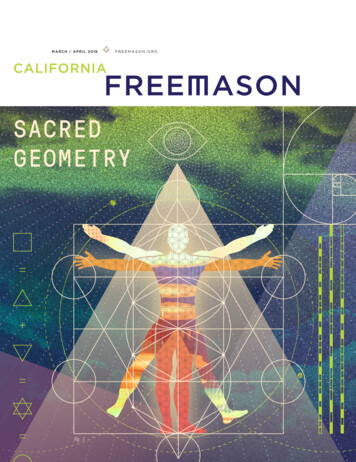

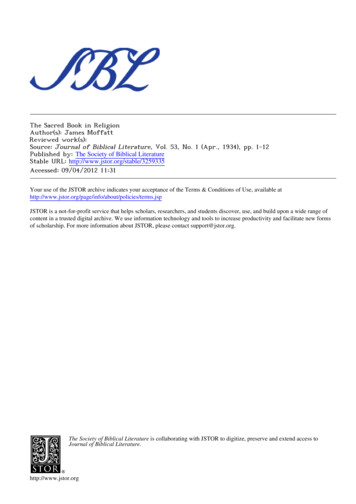

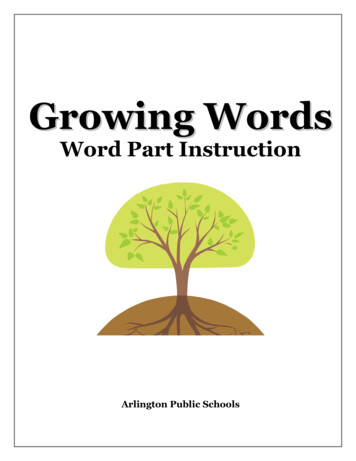
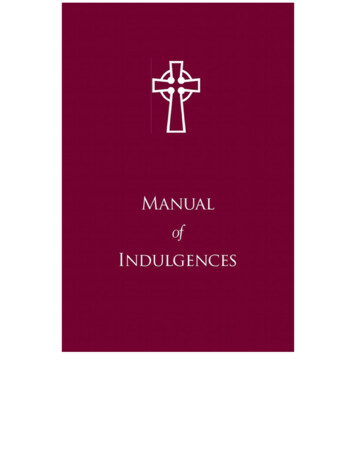
![The Book of the Damned, by Charles Fort, [1919], at sacred .](/img/24/book-of-the-damned.jpg)
